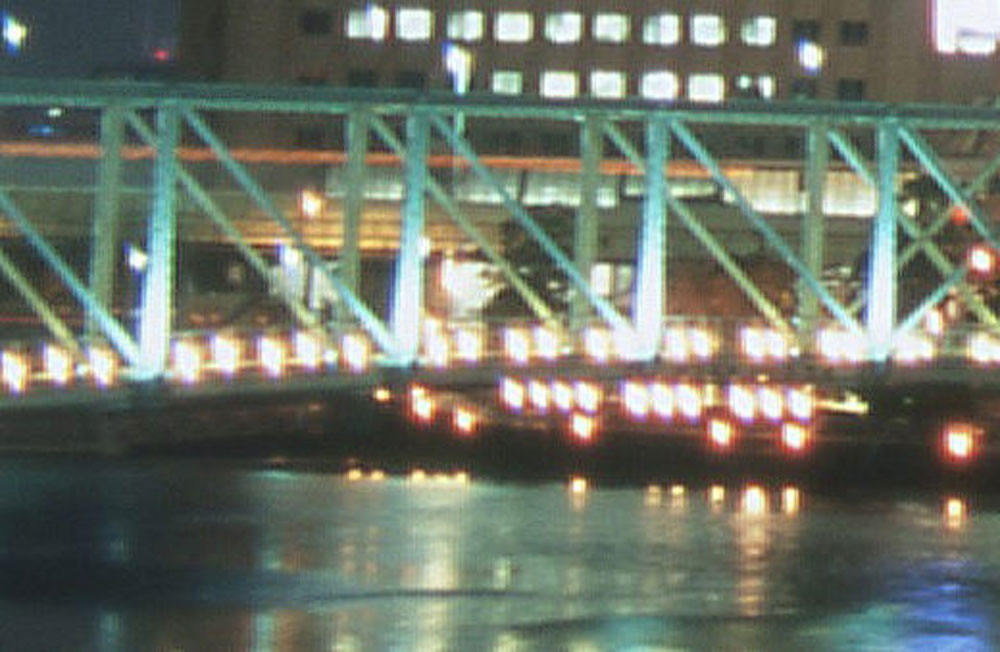NIKKOR - The Thousand and One Nights No.38

from Nikkor-S Auto 35mm f/2.8 to<New>Nikkor 35mm f/2.8
There is no absolute perfection in the development of photographic lenses. In practice, it is very difficult to correct all aberrations. Although large lenses are known for their high performance, most users are put off by their size. Every lens has weak points that manufacturers are constantly working to overcome. Tonight, I'd like to talk about how Nikon's 35mm f/2.8 lens systems for SLR cameras have been improved.
by Kouichi Ohshita
First Nikkor-S Auto 35mm f/2.8

The original Nikkor-S Auto 35mm f/2.8 lens was on the market for quite a while before it was eventually remodeled. However, I wonder if you are aware that there were actually two Nikkor-S Auto 35mm f/2.8 lenses. The two had the same name, so it was not generally known that they were different. A few years after the first lens was released, a major change was made to the lens system. Let's look at the history of this.
In 1959, two months after the introduction of the Nikon F camera system, the first Nikkor-S Auto 35mm f/2.8 was released. The lens has a 5-group 7-element configuration, as shown in Fig. 1, and looks like a front converter design with two elements, concave and convex, arranged in front of a Tessar-type group. It is an early retrofocus-type lens with lower design performance than lenses that came later, requiring higher levels of accuracy during assembly. This apparently led to delays in the launch of the lens, evidenced by the fact it wasn't available until two months after the release of the Nikon F.
Nikkor-S Auto 35mm f/2.8 (later version)

The difficulty in manufacturing the lens and the slower than expected pace of production was a great setback for Nikon. To improve productivity and boost basic performance, it was decided that the lens would have to be redesigned. Based on past experience, it was concluded that a similar lens type would not lead to major improvements. Therefore, development of the new lens began with a thorough review of the lens type. Eventually, after several years, the later version of Nikkor-S Auto 35mm f/2.8 was completed. The 6-group 7-element lens configuration, which is shown in Fig. 2, comprises a Gauss-type rear group that helps to reduce aberrations, including spherical aberrations, coma and curvature of field.
The later version also contributed to improved productivity, resulting in the successful production of the 35mm lens system.
NEW Nikkor 35mm f/2.8

The redesigned NEW Nikkor resulted in a 35mm lens system that offered better performance. However, improvements were to continue. The Nikkor Auto 35mm f/2 was put on the market in 1965, following the release of the second 35mm f/2.8 version, and this led to the development of a succession of excellent retrofocus-type lenses. This then state-of-the-art technology had to be incorporated into the 35mm f/2.8 lens system.
The challenge included reducing the number of lens elements and further boosting performance. A design plan drafted as a report in the late 1960s provided a solution. However, this design was not adopted, allegedly because the lens would have been longer than the existing Nikkor-S Auto.
The introduction of a new lens required new jigs and fixtures to manufacture the lens, as well as the reorganization of production lines. With the additional time and effort required for production, any new lens system would have to show superiority over existing models in all areas, including performance, size and production cost.
Later, improvements were made based on the lens design plan included in the report, and eventually the lens shown in Fig. 3 was completed some 10 years after the 6-group 7-element Nikkor-S Auto was released. The year was 1975, and the lens was designated the NEW Nikkor 35mm f/2.8. The lens was designed with a 6-element 6-group configuration, and therefore contained fewer elements than the existing Nikkor-S Auto but succeeded in enhancing performance.
As an aside, before I became involved in lens design, I took it for granted that the more lens elements, the better the performance. This is not correct, of course. The performance of a lens does not depend on the number of elements it has. More elements may increase lens design flexibility. However, higher performance lenses cannot be realized unless designers make full use of such design flexibility. Furthermore, the more lens elements there are, the higher the chance of manufacturing errors occurring, while ghost and flare are certain to increase. In practice, fewer elements facilitate the development of higher performance lenses. This is why lens designers make every effort to streamline lens element configuration.
The evolution of lens configuration
As described above, Fig. 1 shows the lens configuration of the first Nikkor-S Auto 35mm f/2.8 version, Fig. 2 shows the lens configuration of the later Nikkor-S Auto 35mm f/2.8 version, and Fig. 3 shows the lens configuration of the NEW Nikkor 35mm f/2.8. The evolution of Nikon's wide-angle SLR lens is clear.
The first Nikkor-S Auto looks like a combined Tessar-type lens to which a front converter has been attached. This was the basic lens configuration of wide-angle lenses for SLRs. However, the Tessar-type design could not overcome certain aberrations produced in the front converter element, and thus failed to live up to expectations.
The next version of the Nikkor-S Auto adopted a master lens similar to a Gauss type to boost correction of spherical aberrations, coma and astigmatism. This later design eliminated the element in front of the diaphragm that was relatively ineffective in correcting aberrations, and instead used a convex element behind the diaphragm to provide a streamlined lens configuration.
The NEW Nikkor, developed more than 10 years after the first and later versions of the Nikkor-S Auto lenses, features a sophisticated lens configuration providing the best possible retrofocus-type 35mm lens system. The most important feature of this lens configuration is the addition of two thick lenses behind the front concave element. By adding these thick lenses, Nikon was able to reduce the size of the lens system. The benefits of thick lenses, such as adopted in this lens, were discovered during the development of ultra wide-angle lenses. Furthermore, the second thick lens element has a concave front surface and a convex back that corrects distortion, a feature that has had a major impact on the success of this lens. The NEW Nikkor 35mm f/2.8 better compensates for other aberrations, although its best feature is that it corrects distortion almost entirely. This model successfully overcomes the drawbacks of retrofocus-type lenses, which, in theory, inherently induce barrel distortion.
What's more, this lens employs a surprisingly small front lens element, although it offers significantly more peripheral brightness than the Nikkor-S Auto 35mm f/2.8. This is another benefit of the thick lenses.
Lens performance

Taken with a Nikon F301 camera and the later version of the Nikkor-S Auto 35mm f/2.8 lens system at the largest aperture, in A-auto, and with RVP100
Let's now turn to the improvement of the lens systems from the standpoint of lens performance. Although I had wanted to compare all three models, the first Nikkor-S Auto version was not available, so my performance test is limited to the later Nikkor-S Auto and the NEW Nikkor.
One of the improvements of the NEW Nikkor over the later Nikkor-S Auto is coma compensation in the off-center image areas. Example 1 shows a night view shot with the two different lenses. Such night scenes are usually shot by stopping down to f/5.6 or f/8, but the example photos here were taken with the largest aperture of f/2.8 in order to clearly show the distinguishing imaging characteristics of the two lenses. When the images are enlarged, the points of light appear comet-shaped in the image taken with the Nikkor-S Auto. However, these comet shapes are not present in the image taken with the NEW Nikkor. This suggests that the NEW Nikkor provides better contrast and clearer pictures, even when wide open.
The differences are more recognizable in pictures taken with a digital SLR camera, which has a smaller angle of view with the same lens and therefore shows a slightly magnified image.
Compared to the NEW Nikkor, which provides clear images, even at its largest aperture, Nikkor-S Auto has slightly less contrast when wide open due to some residual coma. The results are polished images that are somewhat delicate, a characteristic that many photographers find appealing.

Taken with a Nikon F301 camera and the later version of Nikkor-S Auto 35mm f/2.8 lens system at the largest aperture, in A-auto, and with RVP-F

Taken with a Nikon F301 camera and the NEW Nikkor 35mm f/2.8 lens system at the largest aperture, in A-auto, and with RVP-F
Examples 2 and 3 show how the two lenses render out-of-focus backgrounds.
Example 2 was taken with Nikkor-S Auto at the largest aperture. Due to low peripheral brightness, images that are out-of-focus on the periphery become distorted like a rugby ball, as demonstrated by the flags in the upper left part of the image. This can cause concentric blurring of the background. In practice, however, this can be overcome by stopping down the lens a few stops. On the other hand, Example 3 was taken with the NEW Nikkor wide open. The NEW Nikkor features greater peripheral brightness, so out-of-focus images on the periphery are less likely to have the rugby ball distortion. Instead, the out-of-focus background appears relatively solid in comparison to the image taken with the Nikkor-S Auto. The edges of the out-of-focus background in Example 3 are bright and sharp. This bokeh could also be improved to a smooth blur by stopping the lens down a little. These lenses have different out-of-focus characteristics. Which do you prefer?

NIKKOR - The Thousand and One Nights
The history of Nikon cameras is also that of NIKKOR lenses. This serial story features fascinating tales of lens design and manufacture.



